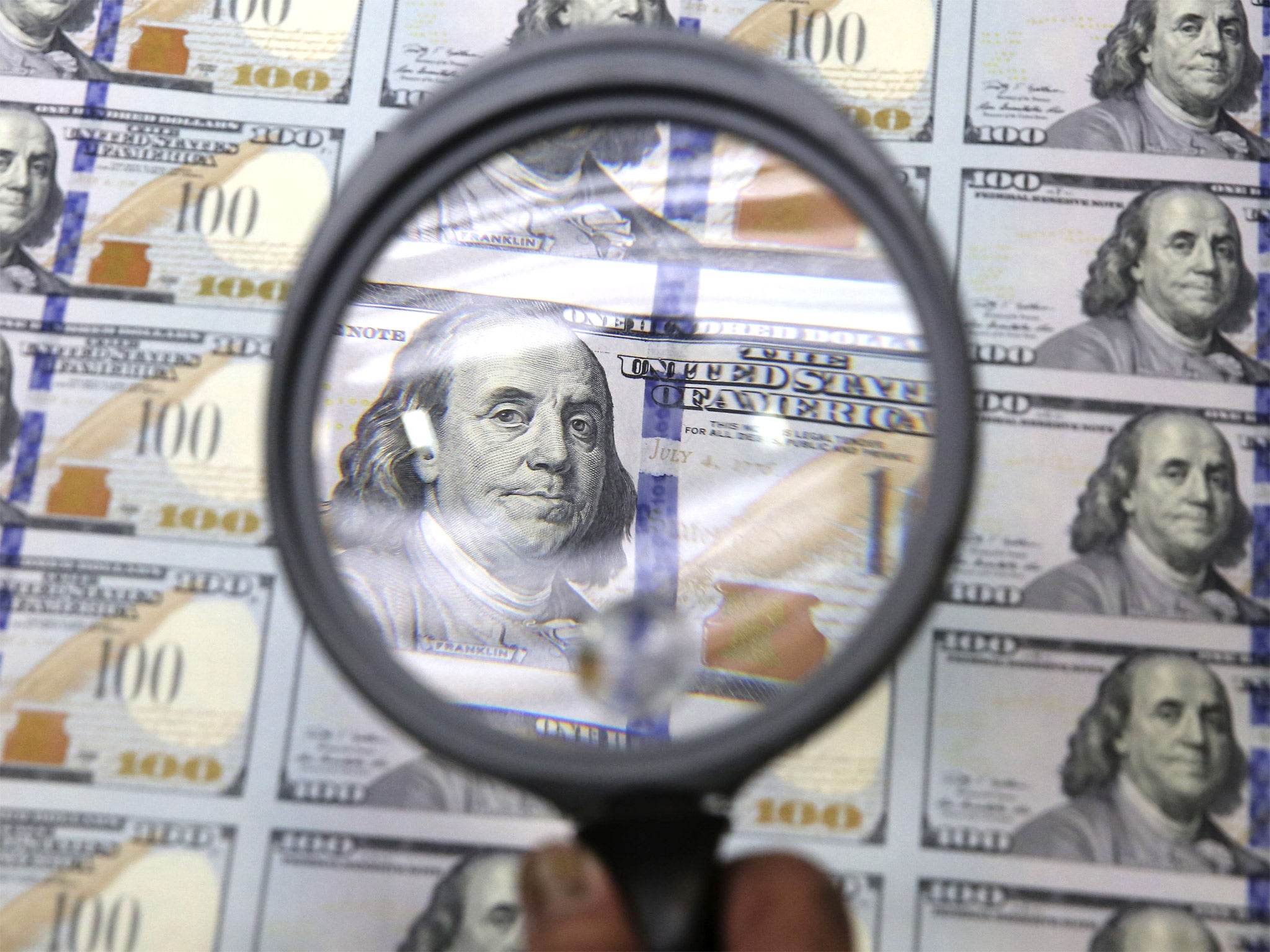US unveils new $100 bill to foil foreign counterfeiters

The US Federal Reserve has begun circulating new $100 notes, introducing new anti-counterfeiting features – including a distinctive splash of colour – that have been more than a decade in the making.
The rollout began despite the shutdown, as the central bank is unaffected by the budget impasse that has left swathes of the US federal government in suspended animation.
While preserving a familiar design that features an image of Benjamin Franklin, the revamp comprises of two new attributes meant to impede the production of fakes. The first is a blue security ribbon with images that seem to move when the note is tilted. The second, an image of a copper-coloured inkwell, contains a holographic rendering of the Philadelphia’s Liberty Bell. The bell’s colour changes when the note is tilted.
The redesign, the first since 1996, is meant to safeguard the integrity of the most widely circulated of all US dollar notes outside the country, which are particularly prone to international counterfeiters. The revamp marks the completion of a process that began in 2003 with the redesign of the $20 note, which is most vulnerable to counterfeiting within US borders. In all, 3.5 billion of the new $100 notes have been produced, worth $350bn.
“The new design incorporates security features that make it easier to authenticate, but harder to replicate,” Jerome Powell, a governor on the Fed’s board, said. “As the new note transitions into daily transactions, the user-friendly security features will allow the public to more easily verify its authenticity.”
In the past, the US has accused North Korea of producing fake $100 notes, dubbed “superdollars” for their sophistication. A 2009 Congressional Research Service report on the matter claimed that at least $45m worth of such fakes had been detected around the world, while the country was said to be earning anywhere from $15m to $25m annually from the scheme.
Originally scheduled to be released in 2011, the Fed had to put off the introduction of the new notes owing to a printing issue.
Subscribe to Independent Premium to bookmark this article
Want to bookmark your favourite articles and stories to read or reference later? Start your Independent Premium subscription today.

Join our commenting forum
Join thought-provoking conversations, follow other Independent readers and see their replies